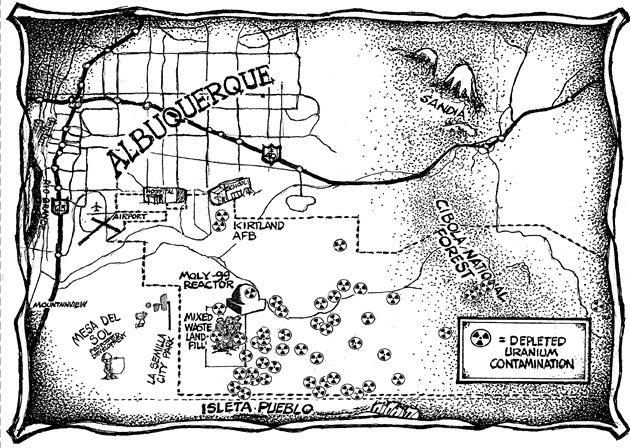
Committee to Bridge the Gap
Files
Download Full Text (2.0 MB)
Document Type
Report
Date
11-2004
Description
The U.S. Department of Energy has recently violated a longstanding Joint DOE-EPA Policy which commits DOE to clean up all its nuclear facilities nationwide to the Environmental Protection Agency (EPA) Superfund (CERCLA) standards. The focal point of this conflict between DOE and EPA cleanup standards is the Santa Susana Field Laboratory (SSFL), a 2800- acre facility on the Los Angeles-Ventura County line in Southern California. Ten reactors, a plutonium fuel facility, and a “hot laboratory” for cutting up irradiated nuclear fuel were operated at the facility, which opened in the 1940s when it was remote from populated areas. Now large numbers of people live nearby.
One of the reactors suffered a partial meltdown in 1959; two others experienced damage in 1964 and 1969 to 80% and 35% of their fuel, respectively. In 1989, DOE found widespread chemical and radioactive contamination at the site, and a cleanup program commenced. In 1995, DOE and EPA entered into a Joint Policy to assure that all DOE sites, whether or not they were on the National Priority List (Superfund), would be cleaned up consistent with EPA’s CERCLA standards.
In March of 2003, DOE reversed course and, while claiming to still follow the 1995 Policy, announced it would not clean the site up to the EPA standards. It would remove only 1% of the contaminated soil and then release the site for unrestricted residential use. In December 2003, EPA issued findings that the site was not being cleaned up consistent with the 1995 Joint Policy and that under the circumstances, so much radioactivity could be left in place that residential use would be unsafe and the only safe use would be restricted dayhikes with limitations on picnicking.
To date no detailed study has been done comparing the DOE and EPA cleanup standards. This report, supported by a grant from the Citizens’ Monitoring and Technical Assistance Fund, performs that analysis.
The evaluation demonstrates that DOE’s decision not to comply with EPA’s cleanup standards will result in radionuclide concentrations being permitted that are hundreds, thousands, tens of thousands, and in some cases, hundreds of thousands of times higher than EPA’s primary cleanup goals. For most radionuclides, the associated risk exceeds even the uppermost permissible risk level of EPA under CERCLA. In some cases, those cancer risks rise to levels on the order of one cancer per ten people exposed, using the federal government’s official radiation risk figures.
Should DOE proceed with acting in contravention of the 1995 DOE-EPA Joint Policy on cleaning up DOE sites consistent with CERCLA at SSFL, there would be significant ramifications for the DOE nuclear complex nationwide, and for public health.
This research was completed money allocated during Round 4 of the Citizens’ Monitoring and Technical Assessment Fund (MTA Fund). Clark University was named conservator of these works.
If you have any questions or concerns please contact us at digitalrepository@clarku.edu
Publisher
Committee to Bridge the Gap
Format
Keywords
nuclear weapons, nuclear weapons testing, environment, non-governmental organizations, United States Department of Energy, tribal governments, environmental cleanup, radioactive fallout, radioactive waste
Rights
Copyright belongs to the authors. Clark University was chosen by the non-profit peace and environmental groups as the conservator of these reports; our right to distribute these works ensures they remain available to the public in perpetuity as intended. Reuse at your own discretion with with due deference to copyright holders.
Location
Santa Cruz, CA
Recommended Citation
Committee to Bridge the Gap and Hirsch, Daniel, "Nuclear Cleanup: The Standards Conflict" (2004). Committee to Bridge the Gap. 1.
https://commons.clarku.edu/bridge_gap/1



